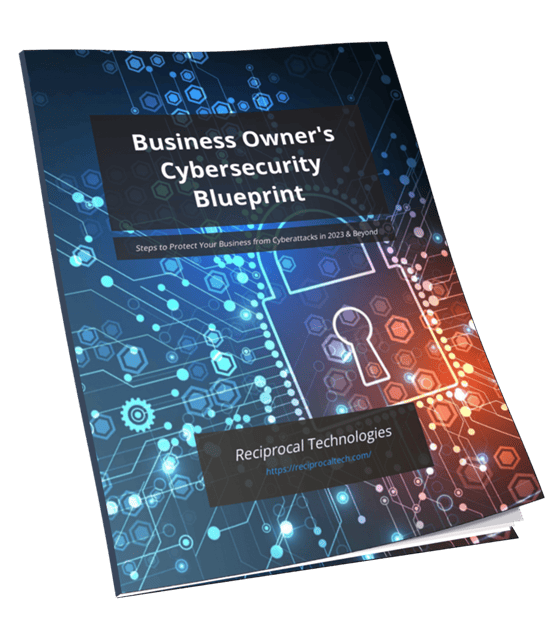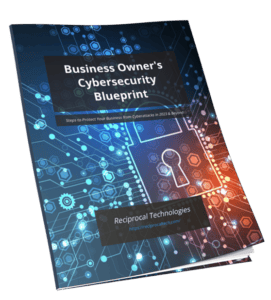Download the Business Owner's Cybersecurity Blueprint

100% Free & Secure - We will never sell your information.

Christmas is not just about gift giving and stockings; it also brings a worrying increase in cyber threats. Cyber criminals take advantage of the festive spirit, targeting unsuspecting businesses that may be less cautious. The statistics tell a clear story:
This surge in cyber activity highlights the need for constant vigilance. Businesses must understand the specific weaknesses that come up during this spooky season. Knowing the potential dangers is vital for protecting sensitive information and keeping operations running smoothly.
To reduce these cybersecurity risks, it’s crucial to take proactive steps. Putting strong IT security measures in place can help avoid devastating outcomes like data breaches, financial losses, and damage to your reputation.
It’s crucial to create a culture of cybersecurity awareness among employees. Online hygiene training for employees gives them the knowledge they need to spot and deal with cyber threats. Here are some key practices to focus on:
Employees should be trained to spot suspicious emails, especially during the holidays when themed scams are common.
Encourage the use of strong, unique passwords and regular updates to improve security.
Training should include safe browsing techniques, such as avoiding unsecured public Wi-Fi and ensuring websites are HTTPS secured.
Multi-factor authentication (MFA) serves as a crucial enhancement to traditional password security. This additional layer significantly reduces the risk of unauthorized access.
Patch management’s importance cannot be overstated. This process involves regularly updating software applications and systems to fix vulnerabilities that cybercriminals may exploit. A well-executed patch management strategy is crucial for safeguarding sensitive information and maintaining operational integrity.
Implementing a robust patch management process not only fortifies security but also enhances operational efficiency, reducing the likelihood of costly security incidents during peak seasons.
Neglecting data backups can lead to severe consequences for businesses, particularly during high-risk periods. The threat of ransomware attacks is heightened, with attackers targeting vulnerable organizations to encrypt data and demand hefty ransoms. A robust data backup strategy mitigates these risks and safeguards critical business information.
Ghost accounts and shadow IT pose significant cybersecurity threats to businesses.
Ghost accounts are unused or forgotten user accounts that remain active after an employee leaves or changes roles. These accounts can be exploited by cybercriminals, providing them with unauthorized access to sensitive information.
Shadow IT refers to unauthorized applications and services utilized by employees without approval from the IT department. This practice can introduce security vulnerabilities as these applications may not adhere to company policies or standards.
Implementing robust strategies can help manage these risks effectively:
Regular Account Audits:
Application Approval Process:
Employee Training:
Taking proactive measures against ghost accounts and shadow IT reduces vulnerabilities. By prioritizing these strategies, businesses can fortify their defenses against potential cyber threats.
Phishing attacks are particularly common during the festive season, as cybercriminals use the festive atmosphere to trick unsuspecting employees. Here are some common tactics they employ:
To strengthen your defenses against these scams, consider implementing the following phishing attacks prevention tips:
Festivities often lead to increased electrical usage, which can expose businesses to potential electrical crises. Power surges caused by excessive decorations or equipment overloads pose significant risks to hardware integrity. Protecting your hardware is crucial to maintaining operational continuity and safeguarding sensitive data.
Consider investing in the following hardware protection tools:
A strong password is a fundamental defense against unauthorized access to sensitive information. It’s essential for businesses to understand the characteristics of a strong password:
Implementing effective strong password policies can significantly reduce vulnerabilities. Here are key strategies for businesses:
Managed IT services provide businesses with essential support to enhance their cybersecurity posture, especially during high-risk periods. Cybercriminals often increase their activities during this season, making it crucial for organizations to have robust defenses in place.
Key Benefits of Managed IT Services:
IT support providers offer tailored solutions designed to protect against these seasonal threats. Our services include:
Investing in managed IT services not only fortifies defenses but also allows businesses to focus on their core operations while experts handle cybersecurity challenges.
Cybersecurity initiatives educate individuals and organizations on proactive measures to protect sensitive information and systems from cyber threats, especially as they increase during the festive season.
Key initiatives include:
Encouragement for active involvement in these initiatives is essential. Businesses can foster a culture of security by sharing these resources with employees, promoting knowledge sharing among teams, and integrating learned practices into daily operations.
The rise in cyber threats requires businesses to take proactive measures. By implementing preventive actions, you can ensure that your organization stays secure during this vulnerable time. Here are some key strategies to consider:
Investing in managed IT services can greatly improve your organization’s defense against cyber-attacks throughout the year. These services offer personalized support, expert advice, and comprehensive security solutions designed to reduce risks and protect valuable data.
Now is the time to evaluate your current cybersecurity situation and take practical steps to defend your business from hidden threats.
There is an increase in cyber threats such as phishing attacks disguised as costume party invitations or trick-or-treat emails. Businesses must be proactive in protecting themselves from these types of cyber-attacks to ensure their security.
Implementing online hygiene training for employees is crucial. This training should cover best practices to minimize the risk of falling victim to cyber-attacks, such as recognizing phishing attempts and using secure passwords. Real-life examples of businesses suffering from successful phishing attacks due to employee negligence can highlight the importance of this training.
Multi-factor authentication adds an additional layer of security beyond just passwords. It significantly reduces the likelihood of unauthorized access, making it a vital component of any cybersecurity strategy. Businesses should implement this by following a step-by-step guide tailored for their specific systems.
Patch management is essential for preventing vulnerabilities that hackers can exploit. It involves regularly updating software to fix security flaws. Establishing a robust patch management process within an organization ensures that all systems remain secure against potential threats.
Ghost accounts refer to unused user accounts that may still have access to sensitive information, while shadow IT involves unauthorized applications used by employees. Both pose significant security risks. Strategies like regular account audits and implementing an application approval process can help mitigate these risks.
Safeguarding hardware against electrical crises, such as power surges from excessive decorations, is crucial. Investing in line conditioners and uninterruptible power supply (UPS) devices can provide added protection and ensure that your equipment remains safe.
Author’s recent posts
